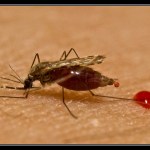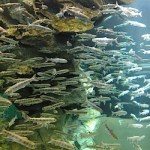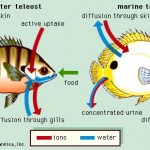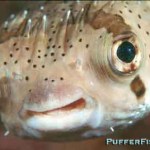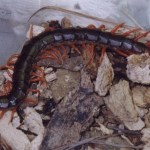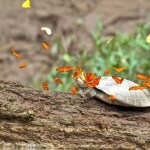sodium
Image of mosquito from http://bloodinurineandpainofca.wordpress.com/
Until now I thought I had come up with enough reasons to dislike mosquitoes, those tiny little blood sucking vectors of disease. With reports of the debilitating mosquito-borne virus chikungunya in the Americas (Carribean), I was ecstatic hear that researchers are working hard to find ways to control mosquito populations. As mentioned in a previous blog, only the females bite to obtain nourishment for developing eggs. According to the study authors, the female mosquito can double her own body weight after just one meal,…
Image of Biwa salmon from the Lake Biwa Museum (http://www.lbm.go.jp/english/exhibits/aquarium.html)
It is not surprising that Biwa salmon (image above), a subspecies of Oncorhyncus masou, do not adapt to seawater very well after having been landlocked in Lake Biwa, Japan for the last 500,000 years or so. Researchers from Hokkaido University and Shiga Prefecture Fishery Experiment Station in Japan wanted to know what caused the salmon to lose their ability to thrive in salt water. In a new paper published in the American Journal of Physiology they compared the…
Freshwater fish are in a constant battle with their environment when it comes to maintaining their electrolyte balance as they are continuously losing ions to the surrounding water. Therefore, they have to actively absorb ions such as sodium, calcium and chloride from the water (see figure below). Prior research has shown that acidic environments cause adult and larva zebrafish to increase sodium uptake from their environment.
Depiction of water and salt homeostasis in freshwater and marine fish.
Researchers Kumai et al (University of Ottowa, Ontario, Canada) have provided evidence to…
Image from www.pufferfish.net
It should be noted that the theory of dolphins getting "high" off puffer fish is highly controversial as others have mentioned that tetrodotoxin, the neurotoxin released from puffer fish, is famous for causing paralysis making it more of a poison as opposed to a good time. It is reportedly more potent than cyanide. In fact, a study published in 1990 reported tetrodotoxin as the cause of death of two Atlantic dolphins found dead in a lagoon (Hokama et al., J Clin Lab Anim. 1990).
So what exactly are those dolphins doing with the puffer fish in the BBC…
Image of a Chinese red-headed centipede from Wikimedia Commons.
Researchers from the Chinese Academy of Sciences and The University of Queensland have discovered a venom from centipedes capable of blocking pain more effectively than morphine!
According to the study authors, centipedes have appeared in the fossil records as far back as 430 million years. They are also one of the first land-dwelling creatures to use venom to incapacitate their prey as shown in the image above of a Chinese red-headed centipede (Scolopendra subspinipes mutilansis) snacking on a roach. The venom is…
Amazonian butterflies drinking turtle tears.Image from: Jeff Cremer / Perunature.com
The Amazon region is notoriously deficient in sodium because of its large distance from the ocean and because the Andes mountains block the delivery of windblown minerals from the West. Some minerals travel from the east, but much of the air is cleaned by rain before the minerals can make it to the western region of the Amazon Basin.
So if you were a butterfly, where would you find a readily available source of salt in the Amazon? The answer is not very obvious, unless you look at the photo of a yellow-…
The Washington Post's Jane Black gives us a heads-up about the forthcoming update to the Dietary Guidelines for Americans. Every five years, USDA's Center for Nutrition Policy and Promotion issues new dietary guidelines based on analysis by the Dietary Guidelines Advisory Committee, a group of scientific experts appointed by the Secretaries of HHS and USDA. Here's how the Dietary Guidelines for Americans 2005 publication explains the guidelines' role:
The intent of the Dietary Guidelines is to summarize and synthesize knowledge regarding individual nutrients and food components into…
